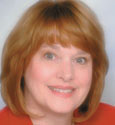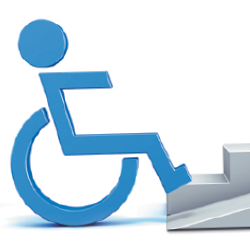 |
 Candy Adams,
Candy Adams,
CTSM, CME,
CEM, CMP, CMM,
"The Booth Mom,"
is an independent exhibit-management
consultant, trainer, speaker, writer, and an Exhibitor conference
faculty member.
CandyAdams
@BoothMom.com |
| |
 hen preparing to exhibit, it's easy to get caught up in logistics and accidentally overlook one of the best ways to promote your company, product, and brand at the show: media coverage. Getting featured in the press - whether it's the show-daily publication, industry publications, or even the local newspaper - can increase your visibility and extend the reach of your exhibit-marketing program. hen preparing to exhibit, it's easy to get caught up in logistics and accidentally overlook one of the best ways to promote your company, product, and brand at the show: media coverage. Getting featured in the press - whether it's the show-daily publication, industry publications, or even the local newspaper - can increase your visibility and extend the reach of your exhibit-marketing program.
But what does it take to first attract the attention of the press and then get them to write about your company and products? Over the years, I've interviewed several members of the media to find out what kind of information they want, and how they want to receive it. Culled from their feedback, the following 10 tips on planning your press strategy are sure to get your program noticed by these influencers.
1. Find your angle.
As you start to develop your press strategy, your first task is to come up with a spin that will get editors - and their readers - interested in your company. What products or services will you display that are new and innovative since the last time you attended this show? Do you have a story with a human-interest twist? What about your product will save the publication's readers time, money, or hassles? Skip the boring history of your company and bios of company officers. For the most part, editors couldn't care less, and neither could their readers.
But when developing your pitch, be very careful. You'll instantly lose credibility if you attempt to pass off last year's product as breaking news. And luring them to your booth with overly inflated claims will only frustrate them when you're unable to deliver a solid story pitch.
Writers and editors want real, newsworthy information such as product advances, features and benefits, and technical details, with a "hook" for their publications' readers. For example, you could relate a human-interest story about how a customer has used your product to achieve impressive results or overcome a common challenge. Once you've developed a potential hook or angle, conduct a simple litmus test to see if it passes muster: If you were flipping through a magazine and saw your story in print, would you take the time to read it? If so, you've got yourself a pitch with plenty of publication potential.
2. Work with show management.
Start by finding out when show management will release the list of press reps covering the show. Then ask about on-site opportunities to meet with the press such as VIP press tours before show opening. Also ask if a press-briefing room will be available and, if so, how you can book it for the prime time slots early in the show.
Inquire if any sponsorships are available for the press room or for hotel room drops for members of the press. You might not be interested in - or able to take advantage of - all of your options, but knowing what's available will help you develop a comprehensive press strategy that's right for you and your goals.
Also ask show management about any releases they will be sending to members of the press to promote the show. For some larger events, show management sends pre-registered press reps a release (or series of releases) promoting new products that will be unveiled on the show floor. If you have a new product and show management is planning such a release, find out how to submit your information for potential inclusion.
3. Target the right press.
There's no such thing as bad press, but write-ups in some publications are certainly better than others. Do a little research to find out which publications your clients and prospects are most likely to read. The most popular of those should become your "tier-one," or targeted publications. Defining this list of targeted media outlets will allow you to focus on creating relationships with writers and editors who have the power to put your messages directly in front of the end users you hope to reach.
Find out which editors from each of your tier-one publications will be attending the show. Then customize a detailed story pitch for each of them, explaining why their specific readers will care about your story.
To create effective customized pitches, you obviously have to read and research each of your tier-one media outlets. Nothing will annoy an editor more than getting a story pitch from someone who has clearly never read his or her magazine and doesn't understand its audience. Simply knowing the name of a magazine's "new products" section can be helpful. That way, you can say something like "We think our new gadget would be perfect for your Hot New Products column," demonstrating that you care enough to have actually picked up the magazine before pitching your story.
4. Start communicating early.
It's critical to get on editors' radar before they arrive at the trade show, or you risk not making their must-see list of exhibitors. If you're unsure about when you should start contacting editors, simply ask a few of your targeted journalists for the optimum time to submit an initial press release. Depending on their schedules, this could be months before a show, so they can meet editorial deadlines for pre-show issues. Others may simply prefer that you distribute your release as part of your press kit in the official press room.
If you're concerned about releasing proprietary new-product info to the media prior to the show, simply place an "embargo" on the information and communicate that at the top of your release. Editors will honor embargoes, holding news until the date you specify before releasing it to their readers.
5. Create an interesting press kit.
Unless you've spoken with members of the media before the show opens, your press kit may be your first - and only - contact with reporters. The way you present your information, the medium you use, and the content itself all have an impact on whether your message will reach your targeted editors or end up in the trash.
Remember that presentation counts. At large shows, there could be hundreds of press kits to choose from, and editors can't possibly spend time reviewing them all, so standing out from the crowd becomes critical. Members of the press often pass over press kits if they have a boring or uninformative cover. At the very least, add a product photo to the cover of your press kit and make sure your company name is visible.
If your kit looks exactly like every other kit on the shelf, it's unlikely to get much attention. To help its press kits stand out at a show, one of my computer clients used the silvery anti-static bags that circuit boards are shipped in rather than traditional folders. A travel agency introducing a new tropical cruise stuck its press releases inside corked bottles filled with sand and sea shells.
6. Write an engaging press release.
Once you've attracted editors' attention enough for them to pick up your press kit, it needs to deliver the kind of information they're looking for. Your press release should include the following: company name and contact information (including booth number); a short, informative headline with a secondary description as a subhead; the body of the press release; and finally, a brief boilerplate description of your company and why it's an authority in your industry.
The body of your press release should follow the form of a news article, with the most pertinent information first. The lead paragraph should summarize the news concisely, followed by the meat of your story, including quotes from company executives. Whatever you do, don't include annual reports or lengthy executive bios. Again, less is more to overloaded editors. As an editor once advised me, "When in doubt, leave it out."
Use short paragraphs and avoid using industry jargon and filling your press release with acronyms that will kill readability. Also, the press sees right through all of your flowery adjectives and extravagant claims, so omit them before they ruin the credibility of your entire press release.
Finally, don't forget to proof, proof, and proof your press release again. Editors hate typos, and any errors will reflect negatively on your company.
7. Provide publication-quality visuals.
If you have interesting photos to support your press release, include them in the press kit. For example, if your release is all about a new product you're launching at the show, provide high-quality images of that product. Oftentimes publications rely on provided product shots, meaning that if you don't have usable, high-quality images, your new gadget may have zero chance of getting reviewed.
Also find out each editor's preference for the photo format, file type, and resolution he or she requires. Always label photos with your company name and product name, and don't forget to include a detailed caption for each image.
8. Develop an at-show press plan.
Press kits and press releases can be great for getting the word out about your company and its products, but if you're really serious about attracting the press, consider adding at-show elements to your press plan. For example, you could host a formal press briefing in the show-provided press room, plan a before- or after-hours press event in your exhibit with hands-on demonstrations, or hold an after-hours wine-'em-and-dine-'em reception. Depending on your budget and press objectives, you may want to choose several different methods.
At the very least, find out when your targeted editors are likely to start scheduling interviews and when they'll be visiting exhibits on the show floor so you can make sure your PR contact, press liaison, and/or executives are available to meet with them.
Then train your staffers on how to handle members of the press when they stop by the booth. Too many staffers are trained to only be on the lookout for existing clients and prospects, and are unsure how to handle press inquiries. One editor I spoke with reported often being ignored by staffers who have presumably been instructed only to interact with attendees wearing certain colored badges, denoting them as buyers.
Making an editor feel unwelcome is the last thing you want to do. So make sure staffers know who your company's press liaison is for each show, when he or she will be in the booth, and how they should handle press requests when the liaison is not available.
9. Offer one-on-one interviews.
Depending on the news being announced, press members I've spoken with consider group press conferences less effective than one-on-one press interviews in terms of depth of information and relationship building. They'd rather spend their time speaking with a company executive and getting the specific information that would be of value to their readers than getting the generic information often presented in a group press briefing.
One of the editors I interviewed called press conferences a "cattle call," and another asked me why exhibitors think that they'd want to hear exactly the same story as every other publication in the room with no personalized spin. Good point.
10. Don't forget the follow-up.
Just because the show's over doesn't mean your press duties are done, too. Drop a quick e-mail to the editors you spoke with, thanking them for their time, providing any information promised, and asking if they need any further information.
However you choose to target the press at the show, don't think of it as a one-and-done effort. Get to know the editors and members of the press, their writing styles, and the method they'd like you to use when submitting information to them. Then use the show as an opportunity to meet face to face, pitch your biggest stories, and cultivate that relationship.
Above all, don't be too self-absorbed when you're planning your post-show follow-up strategy with the press. Anticipate the questions editors may ask and have answers ready. Consider their needs, not just your message, and do whatever you can to accommodate them. Most editors have a handful of companies they love to work with on stories because their contacts within those companies are thorough, responsive, and friendly. The more you can do to position yourself among that group of companies the better. Conversely, if you come across as difficult, guarded, unresponsive, or unappreciative of editors' time, you're far less likely to capitalize on the potential of a mutually beneficial relationship with the press.
Ultimately, attracting the press and developing relationships with writers and editors from your tier-one publications takes time and effort. But keep in mind, while several hundred prospects might stop by your booth at a show, if just one editor stops by, you could score a feature story in an upcoming issue. And that single story could easily be seen by thousands of readers or more, extending the reach of your exhibit-marketing program, and getting the word out about your company and its offerings in a very big way.e
|





 hen preparing to exhibit, it's easy to get caught up in logistics and accidentally overlook one of the best ways to promote your company, product, and brand at the show: media coverage. Getting featured in the press - whether it's the show-daily publication, industry publications, or even the local newspaper - can increase your visibility and extend the reach of your exhibit-marketing program.
hen preparing to exhibit, it's easy to get caught up in logistics and accidentally overlook one of the best ways to promote your company, product, and brand at the show: media coverage. Getting featured in the press - whether it's the show-daily publication, industry publications, or even the local newspaper - can increase your visibility and extend the reach of your exhibit-marketing program. 


